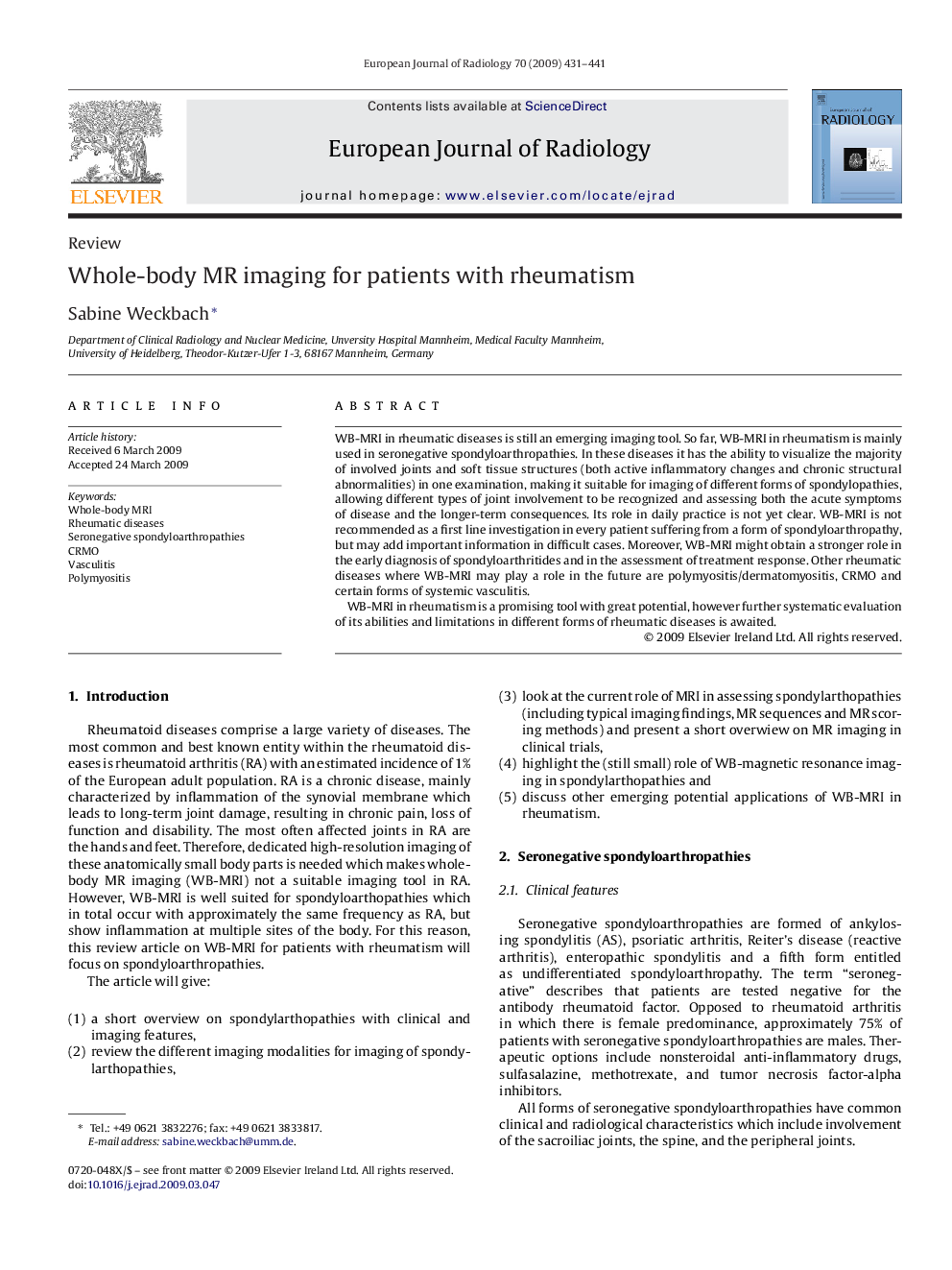| Article ID | Journal | Published Year | Pages | File Type |
|---|---|---|---|---|
| 4227072 | European Journal of Radiology | 2009 | 11 Pages |
WB-MRI in rheumatic diseases is still an emerging imaging tool. So far, WB-MRI in rheumatism is mainly used in seronegative spondyloarthropathies. In these diseases it has the ability to visualize the majority of involved joints and soft tissue structures (both active inflammatory changes and chronic structural abnormalities) in one examination, making it suitable for imaging of different forms of spondylopathies, allowing different types of joint involvement to be recognized and assessing both the acute symptoms of disease and the longer-term consequences. Its role in daily practice is not yet clear. WB-MRI is not recommended as a first line investigation in every patient suffering from a form of spondyloarthropathy, but may add important information in difficult cases. Moreover, WB-MRI might obtain a stronger role in the early diagnosis of spondyloarthritides and in the assessment of treatment response. Other rheumatic diseases where WB-MRI may play a role in the future are polymyositis/dermatomyositis, CRMO and certain forms of systemic vasculitis.WB-MRI in rheumatism is a promising tool with great potential, however further systematic evaluation of its abilities and limitations in different forms of rheumatic diseases is awaited.
